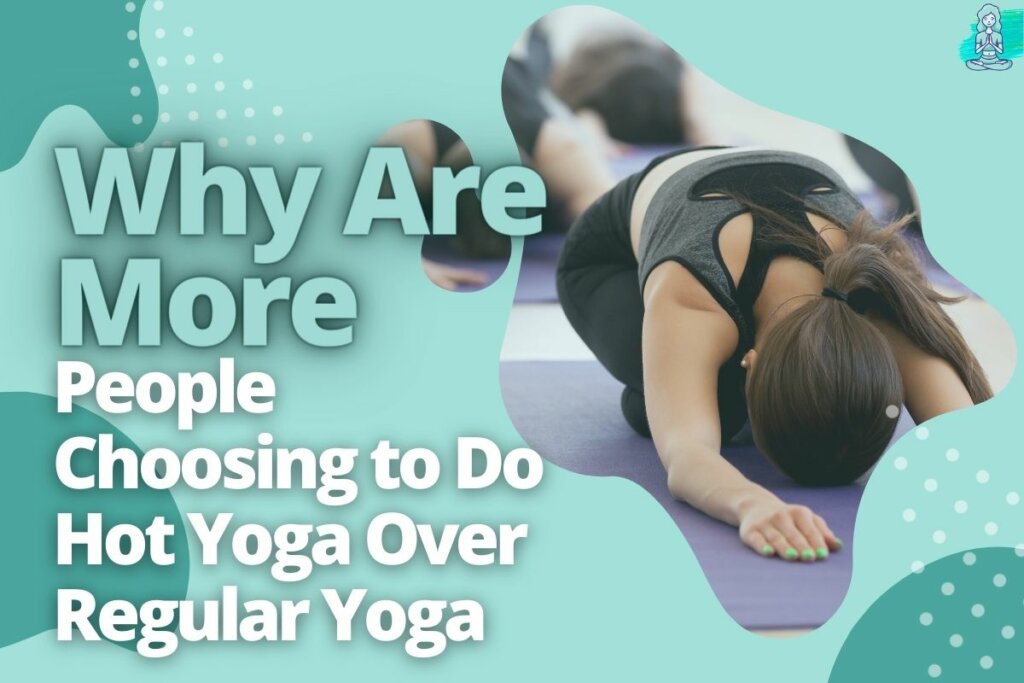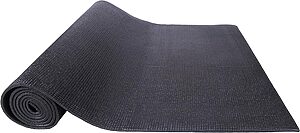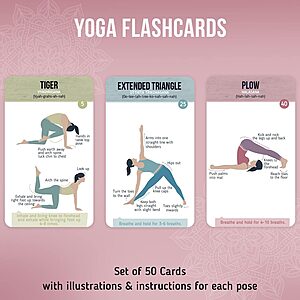Do you love yoga? Do you want to try hot yoga, but you’re not sure if it’s harder than regular yoga?
Hot yoga is all the rage these days. It’s more common now than ever before. But there are some people who aren’t sure if hot yoga is harder than regular yoga or if they should do it at all.
Most people think that hot yoga is much more difficult than regular yoga, but that isn’t the case. In this post, we’ll take a look at the benefits of hot yoga and whether or not it really is harder than regular yoga.

Here’s The Answer To Is Hot Yoga Harder Than Regular Yoga
If you’re interested in trying hot yoga, but are worried about its intensity, don’t be. The practice is definitely harder than regular yoga. Here’s why:
- It’s a more intense workout. You’re moving your body through poses and holding them for longer periods of time than most people would in a regular class, which can make it feel like you’re working out harder than usual.
- Breathing is harder when it’s hot outside and even harder when you’re sweating and breathing heavily from the heat inside a heated room!
- If the humidity in your regular gym isn’t already enough of an obstacle to focus on your form and alignment (the two key elements of yoga), then adding 100 degrees Fahrenheit may seem overwhelming at first glance! However, with some practice under your belt, this becomes less daunting.
- Hydrating before heading into a heated class is crucial; otherwise, dehydration will make things harder for everyone involved! And if staying hydrated isn’t enough motivation for how important water is when practicing hot yoga.
Who Should Avoid Hot Yoga But Practice Normal Yoga?

People with heart conditions, respiratory issues, joint injuries, or muscle strains should avoid hot yoga or Bikram yoga. The same goes for pregnant women and menstruating women.
- If you have a fever, cold, or headache, it’s best to wait until you feel better before heading to your hot yoga class.
- One group of people who should avoid hot yoga is pregnant women. High temperatures can be dangerous for both the mother and the baby. Additionally, the heat can cause dehydration, which can be dangerous for both the mother and the baby.
- Another group of people who should avoid hot yoga is people with heart conditions. High temperatures can cause an increase in heart rate, which can be dangerous for people with heart conditions. Additionally, the heat can cause dizziness and lightheadedness, which can also be dangerous for people with heart conditions.
Additionally, people with respiratory conditions should avoid hot yoga. The heat and the humidity can make it difficult to breathe and can exacerbate respiratory conditions.
Is Hot Yoga Safe For Beginners Than Normal Yoga?
For those who are new to yoga or even an experienced practitioner, hot yoga can be a little overwhelming. But don’t worry, it doesn’t have to be that way! If you go into hot yoga with the right mindset and preparation, you will have an amazing time.
A small study at Texas State University found that hot yoga may not be any more difficult than normal yoga, but it can be a little bit more dangerous because of the heated environment.
However, the study also found that hot yoga can lead to greater flexibility. So, the bottom line is that hot yoga is a great way to improve your wellness and health benefits, but be careful in the hot room.
What Are The Benefits Of Hot Yoga Over Regular Yoga?

Hot yoga has a number of benefits over regular yoga, including:
- Increased flexibility. With hot yoga, you’re able to stretch deeper and hold poses for longer than in regular yoga. The heat also helps relax your muscles and reduce stiffness, so you can get more out of each pose.
- Increased muscle strength. If you’ve ever done any kind of exercise or workout routine that involves repetitions—like running sprints or doing bicep curls—you know how important it is to push yourself past your comfort zone in order to see results. Hot yoga does just this by encouraging you to push through the burn in each pose and hold the posture for longer than normal; this allows for greater muscle development than with other types of yoga.
- Increased metabolism. Like regular exercise programs that increase endurance levels through cardiovascular activity (running), hot yoga increases oxygen flow throughout the body, which means better breathing capacity when exertion is needed during class time or practice at home (aside from being able to perform moves better). This can help improve overall health while reducing risk factors associated with poor physical fitness, such as obesity or heart disease.
How Is Hot Yoga Different From Regular Yoga?
It is important to note that hot yoga can be done at home or in a studio. A heated room, ranging from 104-113 degrees Fahrenheit, is used for hot yoga.
While this temperature may seem quite high for those of us who are not used to it, it does help improve flexibility and circulation. Some people prefer hot yoga because it helps them relax and feel less stressed out.
As with saunas and steam baths, the difference between hot yoga and ordinary yoga is similar. While both involve staying in a room with heat, they require different levels of commitment (and reward).
Depending on what you’re looking for! Some people prefer regular yoga because they like being able to move around freely without worrying about having too much sweat drip down onto their mat.
Others find the close proximity with other sweaty bodies distracting during class! And finally, there’s always an option: try both types out before deciding which one works best with your schedule!”
What Are The Similarities Between Hot Yoga and Regular Yoga?
Hot yoga and regular yoga are both excellent ways to improve your physical and mental health. Both styles of yoga can help you achieve stress relief, detoxification, and improved flexibility and strength.
Both types of yoga can improve flexibility, strength, and balance and can help to calm the mind and reduce stress. However, hot yoga is performed in a heated room, which can help to loosen the muscles and make the poses feel easier.
Additionally, hot yoga can help to detoxify the body and improve circulation. Regular yoga is a great way to improve your overall health and well-being, but hot yoga can be an especially effective workout.
Is There Any Difference In The Poses Of Hot Yoga And Regular Yoga?

In a hot yoga class, the flow of poses can be quite different from what you’re used to in a typical yoga class. In most cases, the instructor will introduce new poses while also encouraging students to stay within their limits.
This will make sense once you’ve been practicing hot yoga for a while and begun to understand how it works.
As I mentioned above, there are two ways people tend to get into their practice: either they want better flexibility, or they want to burn calories and tone their muscles.
If either of these things sounds appealing to you, then check out our guide on doing hot yoga as part of your regular exercise routine!
Does Hot Yoga Make The Poses Difficult?
Hot yoga is most certainly not for everyone. It can pose challenges for beginners and experienced yogis alike, especially those with injuries or conditions like obesity or being underweight.
If you have an injury or are pregnant, hot yoga may not be the best choice for you (or at least it should be approached with caution).
If you do decide to try hot yoga anyway, make sure to talk with your doctor first about any precautions that might need to be taken during class to prevent further injury.
When It Comes To Hot Yoga, How Long Does It Take To Become Used To It?
Another thing to consider is how long it takes to get used to hot yoga. The heat can be an adjustment at first, but it should start feeling comfortable after a few classes that you take on your own.
However, if you have any concerns or questions about the heat level in hot yoga classes, talk with your instructor before or after class so they can help advise you on what’s best for your body and its limits.
If you’re worried about sweating too much during a hot yoga class (which I certainly was!), don’t worry! Just make sure to drink plenty of water beforehand and eat a healthy meal before entering the room so that there won’t be any surprises when things get intense.
Which One Is Better For Weight Loss, Hot Or Regular Yoga?
If you’re looking for a more effective way to lose weight, regular yoga may not be the best option. The truth is that hot yoga helps you burn calories even when you’re not in the room.
- In fact, one study found that just five days of Bikram or hot yoga can increase your metabolism by 12%. The reason for this is that it increases core body temperature and encourages sweating while working your muscles intensely.
- This causes your metabolic rate to increase so that even when you aren’t working out, your body is still burning fat and calories at an accelerated rate (all good things).
- As far as weight loss goes, hot yoga offers two main benefits: increased flexibility and improved posture. When our muscles are tight from stress or poor posture, they have a hard time fully contracting.
- However, when these muscles become more flexible through regular stretching exercises such as those done during heated sessions. Then those same muscles can contract properly, which leads directly to better results.
With any exercise regimen, including cardio workouts like running or cycling where these types of movements are required more often than not!
Why Are More People Choosing to Do Hot Yoga Over Regular Yoga?

The main reason why people choose Hot Yoga over regular yoga is that it’s more intense. While both types of yoga have the same goal, to improve your physical health, flexibility, and well-being.
Hot yoga is a more challenging form. By using heated rooms and equipment like towels or blankets to limit sweat loss, you’re able to push yourself further than you would in a traditional studio without getting as exhausted.
Some studios even offer classes that are specifically designed for beginners who want to give Hot Yoga a shot without feeling overwhelmed by the experience; just make sure that you allow yourself enough time beforehand so that your body can acclimate itself before class begins.
Some people may think that Hot Yoga isn’t as rewarding as other forms of exercise because its focus tends to be on balance rather than cardio endurance (which helps burn calories).
However, this isn’t necessarily true: according to research published by the Harvard University Health Services department, “there are many reasons why someone might consider trying hot yoga instead.”
How Can You Tell If A Hot Yoga Class Is Too Hard For You To Handle?
Listen to your body. If you feel dizzy or nauseous, stop. If you feel lightheaded, stop. If the pain is intense and not going away, stop.
As with any exercise program that involves physical exertion, there will be times when you need to cease all activity and rest for a bit before continuing on with the class (or even leaving).
Suppose something does seem off about how your body feels during or after a hot yoga session. If there’s an increase in pain or discomfort post-class as compared with pre-class, make sure to consult your doctor just in case.
It might be something serious that requires medical attention instead of simply being an exercise injury due to pushing yourself too hard during practice sessions (which are actually encouraged by many studios).
Is It Possible To Hurt Yourself During a Hot Yoga Class?
It’s possible to hurt yourself during any form of yoga, but it’s more likely that you’ll injure yourself in a regular class than in a hot one. If you’re new to hot yoga, the heat can cause your muscles to tighten up and make it harder for them to stretch out.
The upside is that this will allow you to work deeper into the pose and get more out of your practice. It also gives more experienced yogis more challenge, allowing them to get stronger faster than they would otherwise.
If you are injured while practicing yoga or any other activity, it’s important that you see a doctor immediately so they can evaluate the injury and recommend treatment options based on its severity.
Your doctor may recommend rest until the injury heals completely or physical therapy if there’s still some pain or stiffness after resting.
Final Thoughts
In this blog post, we have discussed if hot yoga is harder than regular yoga. We also explained the benefits of doing hot yoga and how it can help improve your health.
We also included points on how hot yoga is more beneficial than regular yoga and why more people are choosing to do it over the latter. If you’re thinking of getting into hot yoga, we would highly recommend it!
Hot yoga can be very beneficial if you want to improve your health, and it is a lot less strenuous than regular yoga. Furthermore, hot yoga has many benefits that regular yoga does not.
We have provided a short list of benefits that hot yoga can offer you, and we also pointed out some of the reasons why more people are choosing to do hot yoga over regular yoga.
To conclude, if you are interested in hot yoga, then it is a good idea to take your time and make the transition gradually. Doing so will give you the best results. So we hope you found our blog post informative!
Frequently Asked Questions
Should You Avoid Hot Yoga If You Have Certain Health Conditions?
While hot yoga can be safe for most people, those with health conditions like heart disease, high blood pressure, diabetes, or a weak immune system should consider doing it in a modified form. Moreover, the heat can make existing conditions like arthritis, fibromyalgia, and even migraines worse.
How To Recover After Your Hot Yoga Class?
Hot yoga increases your body temperature, which minimizes inflammation and promotes healing. When you’re sore, it’s important to hydrate with the right kinds of fluids, eat anti-inflammatory foods, and take time to rest. However, if you’re still feeling sore after taking a few days off from your practice and drinking plenty of water, consider trying the following yoga sequence.
How long does it take to get the benefits of hot yoga?
Hot yoga can give you the benefits of regular yoga in 2 to 3 weeks. However, it’s recommended that you start with a gentle yoga routine and then move to hot yoga after 4 to 6 months of practicing yoga. Also, keep in mind that hot yoga is an intense form of exercise, and you need to be in good physical shape to take the heat.
What’s The Ideal Temperature For Hot Yoga Classes?
For hot yoga, the ideal temperature is 105 to 110 degrees Fahrenheit, which is about 40 degrees Celsius. Additionally, the humidity should be between 40 and 60 percent.
My name is Mugen Seki, and I’m a painter and yoga enthusiast who is passionate about bringing together art and exercise in ways that help people connect with their inner selves. When I’m not painting, I’m practicing yoga. And when I’m not doing either of those things, I’m usually thinking about them.
- How to Hold a Yoga Pose for 4 to 5 Minutes – Practical Tips
- A Guide to Finding the Perfect Yoga Mat for Carpet Floors
- Can You Add Yoga To Fitbit Luxe (Unlock the Power)
- Can You Add Yoga To Garmin Vivoactive (Yoga On The Go)
- Is Aerial Yoga Dangerous (The Scary Truth)
- What Is The Weight Limit For Aerial Yoga (Exploring The Possibilities)














